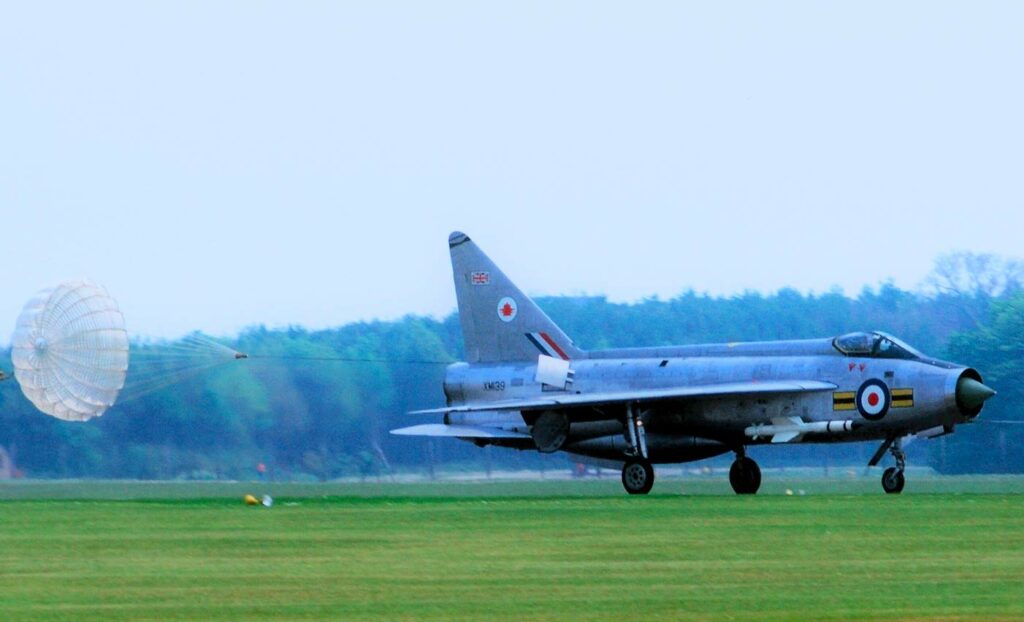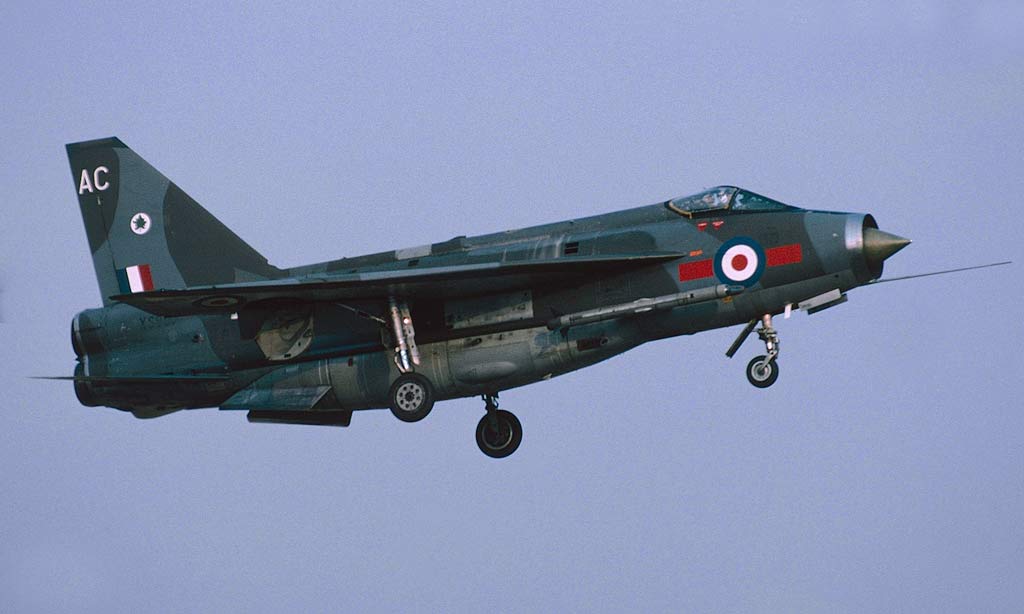The English Electric Lightning was the UK’s first and only supersonic interceptor, iconic for its speed, climb rate, and twin-engine design.
In brief
The English Electric Lightning was a groundbreaking British fighter aircraft, renowned for its remarkable performance as a Mach 2+ interceptor during the Cold War era. Featuring a unique stacked twin-engine configuration, it was designed for rapid climb and high-speed interception, making it one of the fastest fighters of its time. With its delta wings and afterburning Rolls-Royce Avon engines, the Lightning could reach altitudes above 50,000 feet and speeds exceeding Mach 2. Operational from the late 1950s into the 1980s, it primarily served in the Royal Air Force (RAF) for air defense, capable of engaging high-altitude targets rapidly. Despite its impressive performance, it faced limitations in range and payload capacity compared to its contemporaries.

Introduction
In the context of the escalating Cold War, the UK recognized the need for a high-speed, high-altitude interceptor to counter the threat of Soviet bombers and reconnaissance aircraft. The English Electric Lightning, developed by English Electric (which later became part of British Aircraft Corporation), emerged in response to these requirements. Its development was initiated in the early 1950s, with the first prototype flying in 1954. The Lightning was designed to meet the RAF’s demanding specifications for a supersonic interceptor capable of rapid response and high-altitude engagement, entering service in 1960.
Design
The Lightning’s design was revolutionary, featuring a vertical stack of two Rolls-Royce Avon turbojet engines, a configuration that contributed to its exceptional climb rate and speed. This allowed for a slender fuselage, optimizing aerodynamic efficiency. Its delta wing provided the necessary lift and stability at high speeds, while the aircraft’s hydraulic controls enabled precise maneuverability at various altitudes.
Equipped with a Ferranti AI-23 radar and Firestreak or Red Top air-to-air missiles, the Lightning had formidable capabilities in intercepting and engaging enemy aircraft. However, its innovative design also imposed drawbacks, notably limited fuel capacity which resulted in a relatively short operational range, and a tight internal space that restricted avionics upgrades and fuel expansion.
Performance
The English Electric Lightning excelled in performance, capable of exceeding Mach 2 at altitude and achieving a rate of climb around 50,000 feet per minute, distinguishing it as one of the fastest climbers of its time. Its operational ceiling exceeded 60,000 feet, enabling it to intercept high-flying reconnaissance aircraft. The Lightning’s performance made it a formidable interceptor, though it faced challenges from contemporaries like the American F-104 Starfighter in terms of range and versatility, and later, from more advanced Soviet designs that prompted the development of new Western fighters.
Variants
The Lightning saw several variants over its service life, each improving upon its predecessor:
- F.1/F.1A: Initial production versions with limited fuel capacity and armament.
- F.2/F.2A: Upgraded versions with better avionics and increased fuel capacity.
- F.3: Enhanced radar and missile capabilities.
- F.6: The definitive variant, with over-wing fuel tanks to extend range and improved armament options.
These variants addressed some of the Lightning’s initial limitations, particularly in terms of range and operational flexibility.

Military Use and Combat
The Lightning primarily served in the RAF for air defense roles, engaging in numerous interceptions of Soviet aircraft around the UK and in NATO exercises. Its speed and altitude capabilities made it an effective deterrent during the Cold War, although it saw limited combat use. The Lightning was deployed in the Middle East with the Royal Saudi Air Force, but its operational history remained largely peaceful, a testament to its role as a Cold War sentinel rather than a combat warfighter.
The Lightning did not see extensive export due to its specialized role and operational requirements, with Saudi Arabia being a notable exception. It was eventually phased out in the 1980s, replaced by the more versatile and capable Panavia Tornado.
The English Electric Lightning remains an iconic figure in military aviation, emblematic of the Cold War’s technological race. Its remarkable speed, climb rate, and unique design set it apart from its contemporaries, underscoring British innovation in aerospace engineering. While its operational career was limited by its range and adaptability, the Lightning’s legacy as the UK’s premier supersonic interceptor endures, celebrated for its contribution to national defense and its status as a marvel of its time.
Back to the Fighter Jet section.